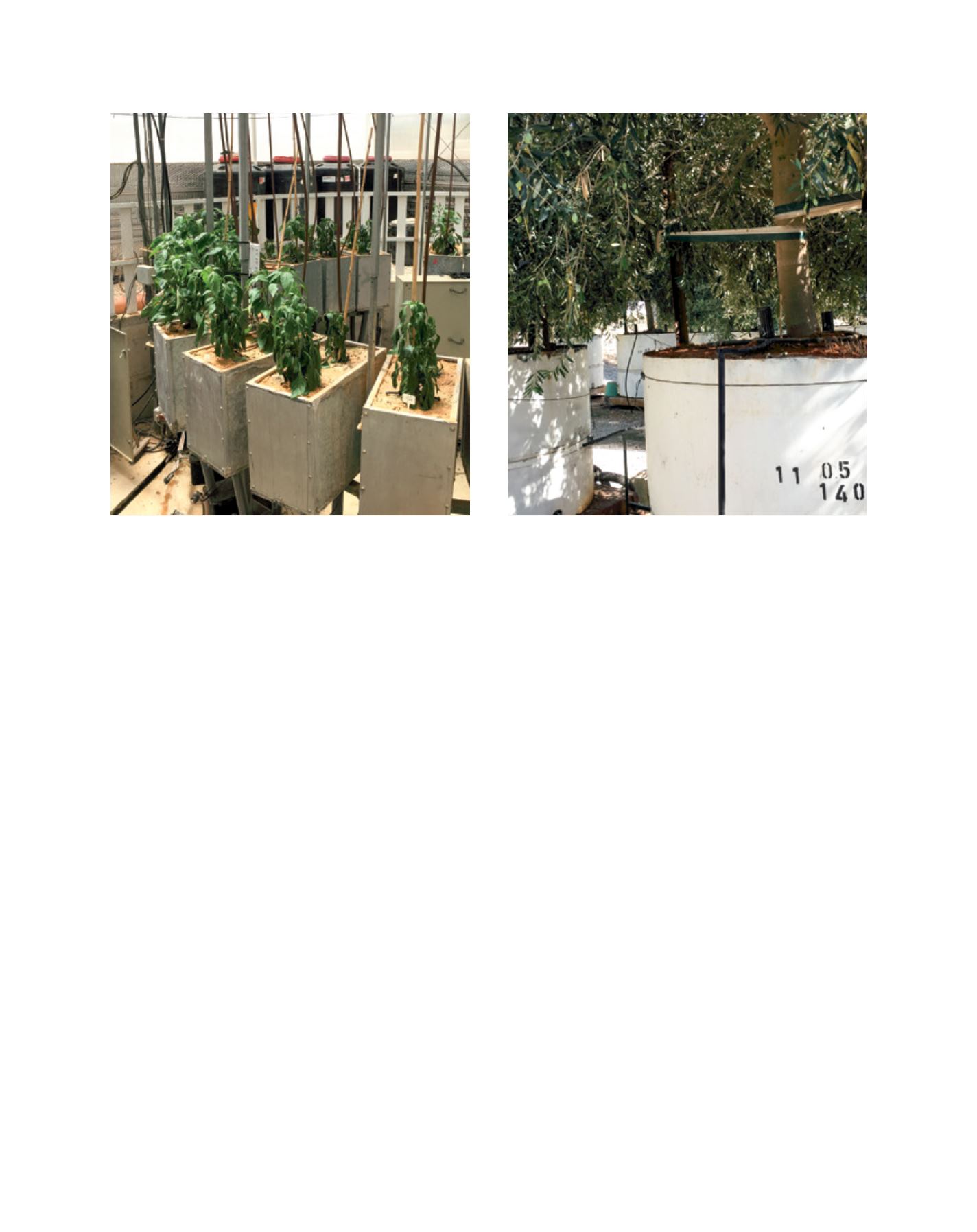

[
] 95
sources. (Some treated effluents may actually have lower salin-
ity than alternative freshwater sources with salinity levels. For
example: wastewater in Israel that is derived from desalinated
seawater has lower salt levels than fresh water removed from
the Kinneret — Sea of Galilee.) Given the seasonal demand in
Israel’s Mediterranean climate, Israel stores effluents in reser-
voirs during the rainy months. The evaporation that takes place
during storage invariably leads to higher salinity levels.
Some 15 years ago, there were already Israeli experts who
questioned the wisdom of the country’s aggressive promo-
tion of effluent reuse. They argued that over time, using
wastewater for irrigation would lead to the accumulation of
sodium compounds in soils. While chloride is required in
very small quantities for photosynthesis and enzymatic reac-
tions, sodium, the other component of salt, makes little if any
contribution to plant health or yields. Even modest quantities
can be toxic to plants and cause damage to soil structure,
making it unproductive for agriculture. Indeed, conventional
fresh water used in irrigation can contain sodium at levels two
orders of magnitude higher than the plant needs to develop.
With time, signs of salinity damage from long-term effluent
usage in Israel were ubiquitous. A study in Israel by research-
ers in the Ministry of Agriculture’s Volcani Institute compared
yields in orchards on that been utilizing effluents via drip
irrigation for 10 years: avocado and citrus yields were 20-30
per cent lower than trees in the same orchards that had been
using fresh water. Soil damage from wastewater tends to be
concentrated in the upper soil layers. But again, the plants
themselves are affected: another recent analysis by leading
expert Alon Ben-Gal and Eran Raveh shows clearly that as
wastewater reuse in Israel has increased over the last 20 years
so have sodium concentrations in soil and crops.
Traditionally, Israeli farmers have overcome salinity prob-
lems by applying high irrigation rates to crops, leaching excess
salts out of the root zone to protect plant health. In an arid
region, farmers may use an additional 30-40 per cent more
water simply to manage salt levels in cultivated soils. This can
solve the plant’s problems but can contribute to contamina-
tion of the underlying aquifers. Recent experience in large
olive tree plantations in Israel’s Negev desert constitutes a
cautionary tale.
The olive trees relied on drip irrigation with water from
relatively saline, underlying aquifers. The salts were managed
by applying water for leaching. During the rare winter storm
of 30 mm or more, salts accumulating on the surface could
dissolve and be delivered directly into the root zone. Facing
perennially high evapotranspiration levels, the trees took in
large quantities of the salty water and immediately showed
signs of distress. Recently, when olive oil prices dropped, the
cost of such massive leaching became prohibitive and the
farmers reduced the magnitude of irrigation dramatically. It
did not take long before the tree production began to signifi-
cantly decline due to exposure to the salts.
The lesson is clear: in arid and semi-arid regions where
there is not sufficient precipitation to flush salts out of soils,
deficit irrigation will not work. This makes leaching impera-
tive but economically and environmentally problematic.
In a recent article, two leading Israeli agricultural research-
ers with Alon Ben-Gal and Eran Raveh wrote: “Israel’s policy
of lower prices for salty water and absolute utilization of
wastewater for irrigation without addressing salinity may
have been reckless. Leaching, necessary in agricultural water
management when using water containing salts, is of itself
unsustainable, as the water leaving the root zone contains not
Lysemeters measure the response of pepper plants to salinity at the Wyler
Department of Dryland Agriculture, Ben Gurion University
Lysimeters measure the response of olive trees to different irrigation regimes
at the Ministry of Agriculture’s Gilat research station
Image: Alon Tal
Image: Alon Tal
L
iving
L
and
















